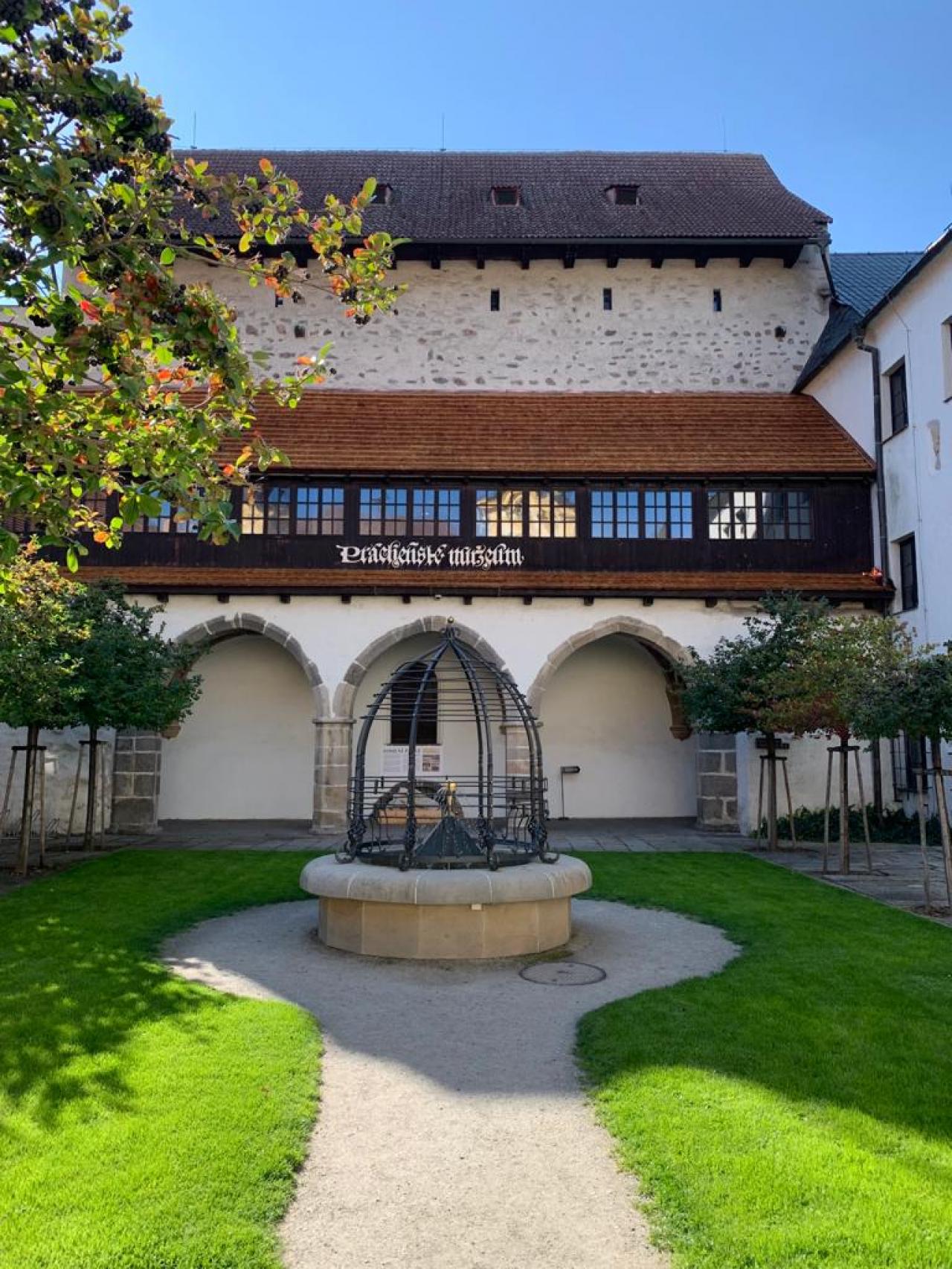Prácheňské Museum in Písek
Dating: 1905, 1993
Annotation:
From the point of view of the history of natural sciences, the Prácheňské Museum in Písek, which was founded in 1884, is particularly interesting for its exhibitions on the geology and mineralogy of the Písek region, and on the history of gold mining in Pootaví (land along river Otava). Both exhibitions refer to a number of places in the Písek Mountains or more distant surroundings of Písek, which can be explored after visiting the museum.
Description:
The beginnings of an independent mineralogical collection in the Prácheňské Museum date back to 1905, when August Krejčí, a prominent mineralogist from Písek, arranged the collection expertly, expanded it with his own finds and inventoried it. Krejčí arranged the mineralogical exposition in Písek following the model of Karel Vrba, who created the mineralogical exposition in the National Museum. The personality of August Krejčí is presented in the exhibition in relation to his merits for the knowledge of the minerals of the Písek region, which is also connected with his discovery of a new mineral, which he named pisekite after the city of Písek. This mineral, which Krejčí described in 1923 and whose acceptance as a valid mineral species is still a subject of controversy due to its complex chemical structure, can also be seen - along with other important Písek region rocks, minerals and vltavines - in the museum`s exhibition called Mineral Wealth. The area of mineral wealth is also closely related to the second museum exhibition, which focuses on the history of gold mining and processing along Otava and especially in the vicinity of Písek. August Krejčí also represents a certain link between these two expositions, as he not only published many articles on gold mining and panning, but also engaged in this activity on a scientific basis. He was particularly interested in the locality of the Havirka gold mines in the Písek Mountains, from which a number of exhibits can be found in the exhibition. The exhibition entitled Gold in Along Otava introduces visitors not only to panning and mining, but also to further processing, i.e. smelting or crushing and grinding, of gold ore. The exhibition is complemented by enlargements of drawings from the 16th-century work of Georgius Agricola. One of the most important exhibits, which is considered to be one of the most beautiful in the world in terms of mineralogy, is a gold plate found in 1927 near Křepice in the Vodňany region. It is electrum, a natural alloy of gold (53.9%) and silver (46.1%). The current expositions of the Prácheňské Museum were opened on 18 May 1993.
Connected places:
August Krejčí`s Grave and Commemorative Plaque in Písek
Gold Mine Havirky in the Písek MountainsHrob a pamětní deska Augusta Krejčího v Písku; Zlatodoly Havírky v Píseckých horách
Keywords: geology; mineralogy; gold in Pootaví (along river Otava); mineral wealth; pisekit; the Křepice gold; August Krejčí
References:
Cícha, J.: Písecký mineralog a přírodovědec August Krejčí (s připojenou bibliografií). In: Prácheňské muzeum v Písku: zpráva o činnosti za rok 2000. Písek 2001, s. 52–60.
Fröhlich, J.: Výstava: Písecký mineralog August Krejčí (výročí 75 let od úmrtí). Prácheňské muzeum v Písku 4. 5.–1. 6. 2020. In: Výběr: Časopis pro historii a vlastivědu jižních Čech, č. 2, 2000, s. 167–168.
Fröhlich, J.: Zlato na Prácheňsku. Písek 2006.
Internetový zdroj:
Prácheňské muzeum v Písku. URL: http://www.prachenskemuzeum.cz/ [15.9.2021].
Author's initials: LeO
Photos:

(Author: )

